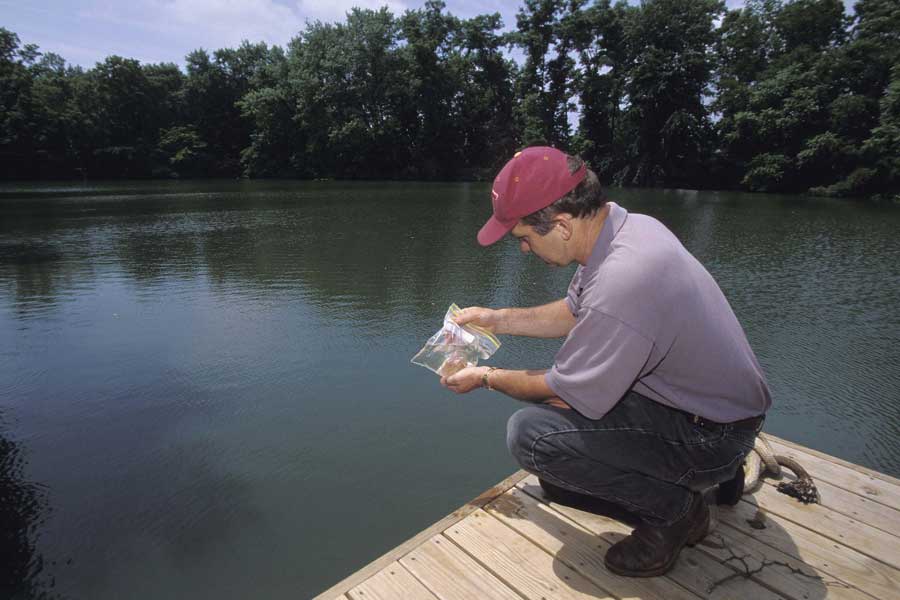Panel of scientists from Virginia Tech and other universities recommends fresh water nutrient standards for Virginia

A group of faculty and researchers from Virginia Tech and three other universities are working with the Virginia Department of Environmental Quality to establish much needed fresh water nutrient standards for the state.
The multi-university panel called the Academic Advisory Committee is based at Virginia Tech’s Virginia Water Resources Research Center. The group is comprised of faculty with expertise in environmental sciences, biology, statistics, stream ecology, and environmental engineering from Virginia Tech, the University of Virginia, Virginia Commonwealth University, and the Virginia Institute for Marine Science.
Since 2005, the committee has studied the safe levels of nitrogen and phosphorous in streams, rivers, lakes, and reservoirs. According to the Environmental Protection Agency, high levels of nitrogen and phosphorous – nutrients mainly derived from agricultural practices and urban stormwater runoff – are a major cause of water impairment.
Water scientists need to strike a delicate balance between too much or too little nitrogen and phosphorus in water bodies. “Nitrogen and phosphorous are chemicals essential to sustaining aquatic life in surface waters,” explained Tamim Younos, associate director at the water resources research center and research professor of water resources in the Department of Geography in Virginia Tech’s College of Natural Resources.
However, Younos said that too much of these two nutrients leads to the growth of undesirable levels of aquatic plants such as algae that can endanger the fragile aquatic ecosystems. “We need to establish scientifically what exactly the safe levels for nutrients are in order to keep our waters healthy for various uses.”
According to the latest Virginia Water Quality Report released by the Department of Environmental Quality in 2006, the number of impaired areas of rivers, streams, lakes, and estuaries has increased during the past decade. In 1996, 4 percent of Virginia’s rivers and streams mileage, 15 percent of the lakes, and 22 percent of the estuary areas were reported as impaired. Ten years later, in 2006, the reported impairments were 19 percent of rivers and streams, 94 percent of lakes, and 98 percent of estuaries.
The report notes that the increased number of impaired waters can be attributed in part to better water quality monitoring in Virginia over the past decade.
The good news is that a long-term analysis of Virginia’s surface waters shows improved levels of certain contaminants such as nitrogen, phosphorus, and bacteria. “[The Academic Advisory Committee] is trying to put this information in context by helping [the Department of Environmental Quality] establish safe benchmarks for these contaminants,” said Younos.
The committee experts are using statistical methods and modeling techniques to establish nutrient criteria for the state’s fresh waters. For example, based on committee recommendations, the Department of Environmental Quality has recently amended the Virginia Water Quality Standards regulation to protect Virginia’s reservoirs from nutrient harmful impacts.
The Academic Advisory Committee was formed in 1997 after the Virginia General Assembly asked the Department of Environmental Quality to develop water quality standards for the state according to the Clean Water Act recommendations. Since 1997 the Virginia Water Resources Research Center has spearheaded several water quality standards projects and served as a liaison between the partnering universities and the department.
“The […] partnership is quite a unique initiative for establishing water quality standards,” said Younos who has served as the committee project leader since 2002. “It is one of the few such partnerships in the [United States] between research universities and a state agency. We are delighted by the Department of Environmental Quality’s enthusiasm and support.”
Jean Gregory, environmental manager in the water quality standards program at the Department of Environmental Quality, said that the cooperation “has been invaluable” to the agency. Gregory also noted the positive feedback that the department had received from various stakeholders about the development of nutrients in lakes and reservoirs in particular.
The Academic Advisory Committee activities are supported by funds from both the department and U.S. Environmental Protection Agency.
The Virginia Water Resources Research Center was established at Virginia Tech in 1965 by the U.S. Congress as one of the nation’s 54 water institutes, and is affiliated to Virginia Tech’s College of Natural Resources. The center’s mission is to offer research and educational opportunities to water scientists and students, and to provide citizens and government leaders with water science information.




